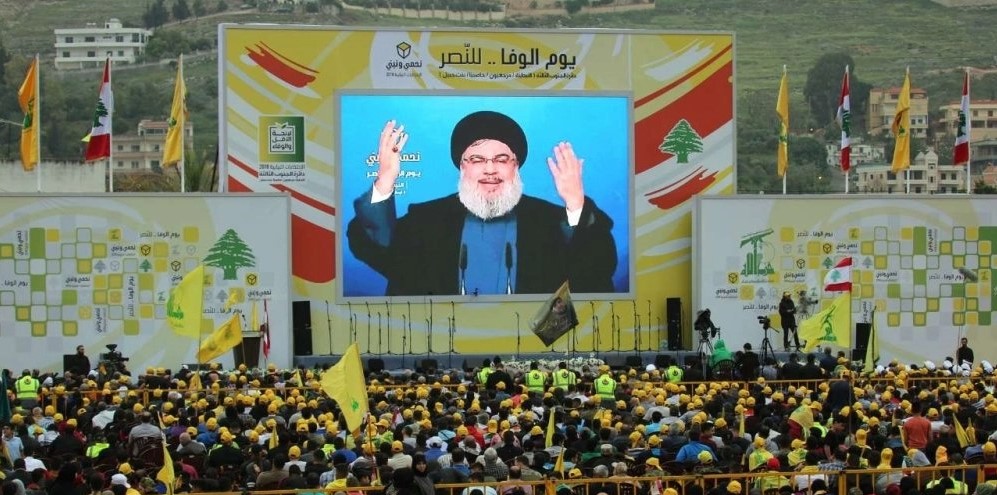This article is the second of a three-part series on Hezbollah. For more information, see Part I: Hezbollah Origins and Ideology and Part III: Modern Hezbollah. The series is part of the wider “Understanding” series, aimed at providing the history behind, and context to, the world’s ongoing conflicts and issues in order to increase your understanding of modern world issues.
Hezbollah’s position of power in Lebanon rests on several pillars: its complete opposition to Israel and foreign occupiers; its ties to foreign sponsors; and its strong political and social standing in Lebanon. This mix of support to the Lebanese population, money, battle-hardened forces, and rebranding as a nationalist movement enabled Hezbollah to transcend other, similar militant movements and establish itself as a serious regional actor. In conflict after conflict, Hezbollah has demonstrated a military prowess above other Middle Eastern militant groups—and even some Arab militaries. After the 2006 war and prior to the outbreak of the Syrian conflict, Hezbollah focused militarily on Israel, as both sides, in what could be called an interpretation of mutually assured destruction, feared another war would break out.
Hezbollah’s Organizational Structure
Hezbollah is organized into several sectors, with the Shura Council at the top. Hezbollah does not consider itself to have a separate military and political wing—even as some nations have only designated the military wing a terror organization, not the group as a whole—but considers itself a unified being.
“In Lebanon, there is one Hezbollah, named Hezbollah. We don’t have a military wing and a political wing.” -Naim Qassem, Hezbollah’s Deputy Secretary General
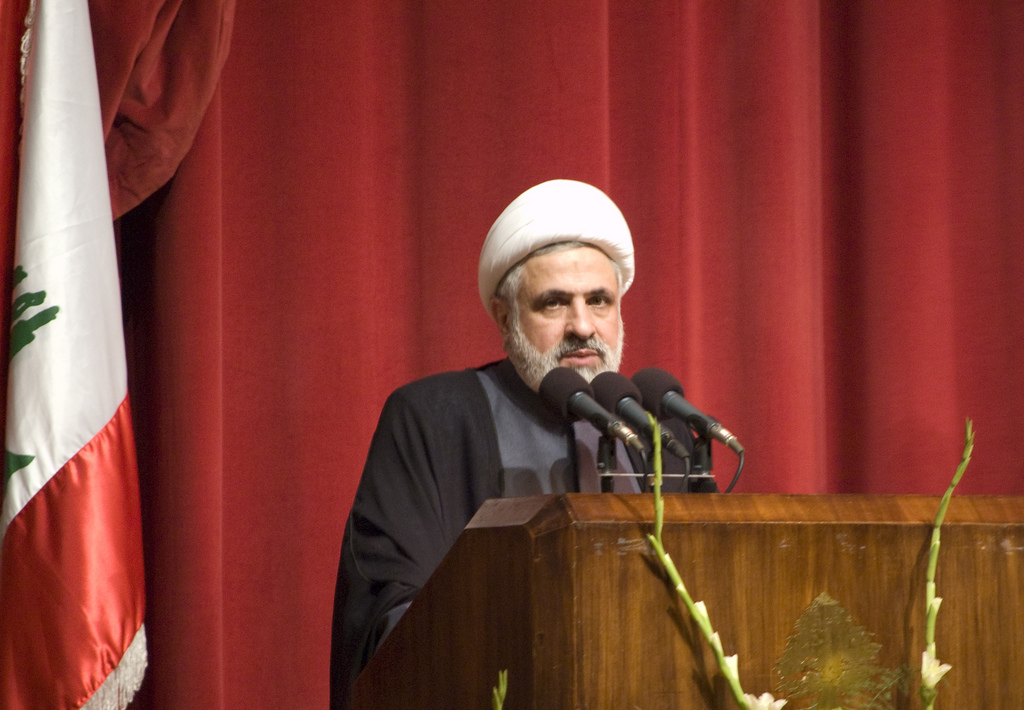
This belief is supported by the manner in which Hezbollah operates, with all of its departments being interconnected and answering to the same Shura Council.
- The Shura Council is Hezbollah’s central decision-making authority and is headed by Secretary General Hassan Nasrallah. It also oversees all other councils of Hezbollah. The council members are elected by members of Hezbollah’s “General Committee.” One purpose of the council is to decide upon the leader of Hezbollah for a three-year term; however, this decision-making process has become a mere formality since Nasrallah took over the organization in 1992.
- The Judicial Council is a Shiite tribunal network, meant to judge according to both the principles of Sharia law amongst Lebanon’s Shiite population, as well as during times of internal conflict within Hezbollah’s ranks according to its internal laws and rules. The tribunals operated by the Judicial Council can impose fines and even prison sentences, and operate outside the authority of Lebanese state courts. The Judicial Council operates municipal and regional courts, and even has a supreme court, which is headed by an Islamic judge that is picked specifically by the Shura Council.
- The Political Council provides consulting to the Shura Council. The Political Council is charged with maintaining contact between Hezbollah and influential political groups of all sects within Lebanon, civilian groups, and Hezbollah’s foreign contacts in the region. Furthermore, the Political Council handles Hezbollah’s political programs, as well as composing/planning election campaigns and maintaining/establishing political alliances. The Political Council is not a decision-making body and is purely advisory.
- The Executive Council is one of Hezbollah’s most important councils, responsible for all of Hezbollah’s civilian activities, including its many social programs. This gives the Executive Council extensive responsibility in promoting Hezbollah’s ideological goals in the nation. The head of the Executive Council, Hashem Safi al-Din, is a member of the Shura Council and is considered to be a potential successor to Nasrallah when one is named.
- The Parliamentary Council is charged with overseeing Hezbollah’s governmental activities. Its members are formed of both former and present Hezbollah Members of Parliament and ensure the obedience of Hezbollah’s parliamentarians to the Shura Council. Notably, the council is overseen, but not headed, by Naim Qassem, the Deputy Secretary General of Hezbollah.
- The Jihad Council is, other than the Shura, perhaps Hezbollah’s most important council as it heads all of Hezbollah’s military activities, both inside and outside of Lebanon, as well as interaction between Hezbollah’s military aspects and civilian bodies. The council is directly overseen by Nasrallah, though the technical head is unknown. The Jihad Council works in direct coordination with Iran.
Hezbollah’s Political Participation
The Loyalty to the Resistance bloc is the name of Hezbollah’s political party. While some view Hezbollah as having a military wing and a political wing, it is important to understand that this separation is largely superimposed by outside entities. Hezbollah views itself as being one entity, not having a military wing separate from its political wing. This is evidenced by the entirety of Hezbollah answering to the same body, the Shura Council, and each of its subdivisions being interconnected.
With this understanding in mind, below is a brief overview of Hezbollah’s political history in Lebanon’s elections and the political sphere.
1992: Hezbollah’s political history begins in 1992 when they first ran in elections. Hezbollah, now under Hassan Nasrallah, announced their candidacy just 50 days before the election. The election was Lebanon’s first parliamentary election since 1972, came two years after the end of the Lebanese Civil War. The election was boycotted by a large percentage of Christians, many of whom protested the presence of Syrian forces in the country. They claimed Syria would influence the election and thus it would not be free nor fair, thus prompting them to boycott the election.
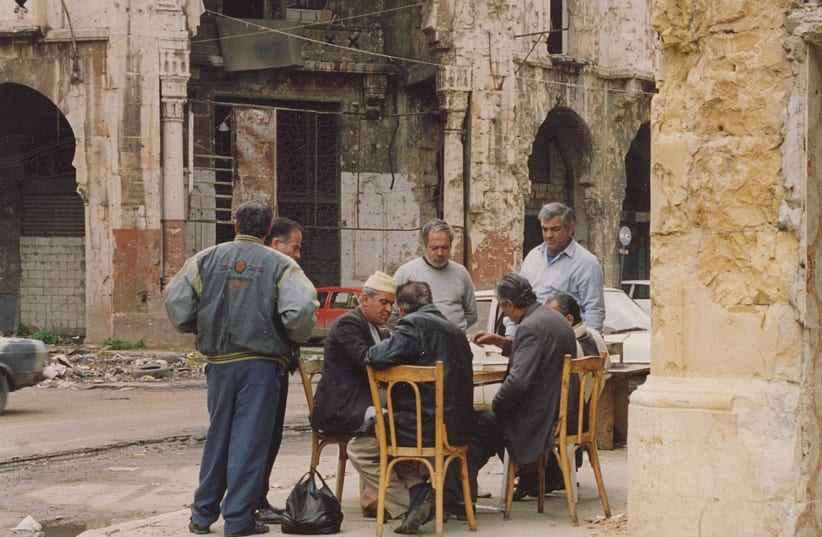
With the Christian boycott, the election witnessed a very small turnout of approximately 25 percent. In this election, Hezbollah won eight seats, with an additional four seats won by independents that were considered to be a part of its bloc. Hezbollah outperformed 13 other parties, despite being new on the scene.
1996: Hezbollah again went to the polls in 1996. Hezbollah won seven seats, with an additional two seats going to associated independents. This election again saw a Christian boycott, once again largely due to the presence of Syrian forces in the country. This election witnessed a larger voter turnout, at approximately 43 percent.
Notably, although Hezbollah only won seven seats in this election, they were still the second largest party in parliament by seat number, as the majority of seats went to independents.
2000: Hezbollah performed distinctly better in the 2000 elections. This election was particularly unique because it took place after Israeli forces had withdrawn from the country, which was in large part thanks to Hezbollah’s insurgency against them. Hezbollah won ten seats, with an additional two seats going to associated independents. Voter turnout was approximately 40.5 percent.
2005: 2005 was a tumultuous year for Lebanon. Former Prime Minister Rafik Hariri was murdered, which triggered the Cedar Revolution. The Cedar Revolution was the cause of Syrian forces withdrawing from the country after a 30-year occupation and Lebanon’s governmental collapse. In the following elections, Hezbollah performed well. It was in this election that Hezbollah formed the March 8th alliance, opposing the March 14th alliance. Hezbollah’s March 8th alliance notably included the Amal Party, a Shiite party that Hezbollah had historically been at odds with, and the Free Patriotic Movement, a Christian party. Hezbollah’s March 8th alliance lost to the March 14th alliance, however Hezbollah managed to secure 14 seats.
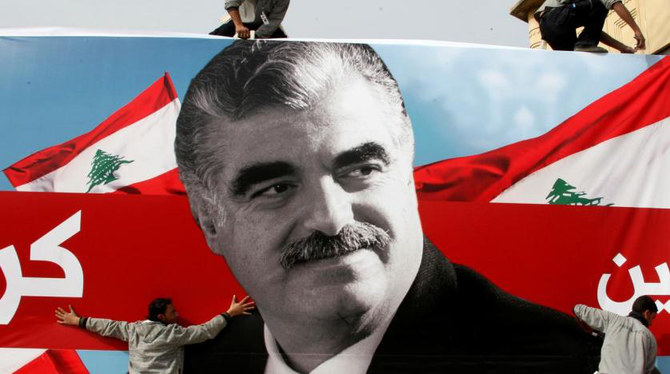
In the new national unity government, Hezbollah members were named as the Minister of Labor and the Minister of Energy and Water. Hezbollah heading these ministries marked the first time that Hezbollah had officially entered the government.
Voter turnout was approximately 46.5%
2006: Hezbollah’s initial presence within the government was short-lived. Calls were growing for an investigation into the murder of former PM Rafik Hariri the previous year, an investigation that Hezbollah was making efforts to prevent. Alongside this were also calls for restrictions on Hezbollah’s military power, the extent of which had been evidenced earlier in the year during their 34-day war with Israel. Notably, two Hezbollah members were later indicted for the murder of PM Rafik Hariri. These two factors, mixed with demands from the March 8th alliance to form a new national unity government, prompted a political crisis. Hezbollah withdrew from the government, and soon after Nasrallah called for national protests. Pro- and anti-government protests took place across the country, some of which led to sectarian violence.
2008: Lebanon’s political crisis ended in late May 2008 with the formation of a new unity government. Hezbollah was once again appointed to head the Ministry of Labor. However, several other ministries went to allies of Hezbollah, increasing their influence within the government.
2009: Parliamentary elections were once again held in 2009. Hezbollah won 13 seats, and its March 8th alliance won 44 seats. Following the election, Hezbollah once again headed two ministries, the Ministry of Agriculture and the Ministry for Administrative Development. It is worth noting that two of Hezbollah’s 13 elected parliamentarians were Sunni Muslims, occupying Sunni seats in parliament. This further evidences Hezbollah’s transition to a Lebanese nationalist organization, with the entry of Sunni politicians under Hezbollah’s name. The 2009 election saw a 55.2 percent voter turnout, the highest since Lebanon resumed elections. Another election was not held until 2018, largely due to the nation’s persistent political issues.
2011: Hezbollah, along with a number of political allies, withdrew from the government once again in January of 2011 in protest of an investigation by the international Special Tribunal for Lebanon, which was headed by UN-appointed judges, into the murder of former PM Rafik Hariri. In total, 11 government ministers resigned, prompting another government collapse. Later in January, Najib Mikati, a former PM, was nominated to become the nation’s new PM. There were protests throughout the nation against Mikati’s candidacy, as he was a Sunni viewed to be an ally of Shias. Mikati went on to form a new government comprised of 30 different ministers. Of these 30, 18 ministers were from Hezbollah’s March 8th alliance. Hezbollah itself headed two ministries: the Ministry of State for Administrative Reform and the Ministry of Agriculture.
2013-14: Mikati’s government was short-lived and ended with his resignation in 2013. Mikati’s resignation left Lebanon without a Prime Minister for 10 months before PM Tammam Salam formed a new unity government in February 2014. This new unity government consisted of 24 ministers: eight from the March 8th alliance, eight from the March 14th alliance, and eight independents.
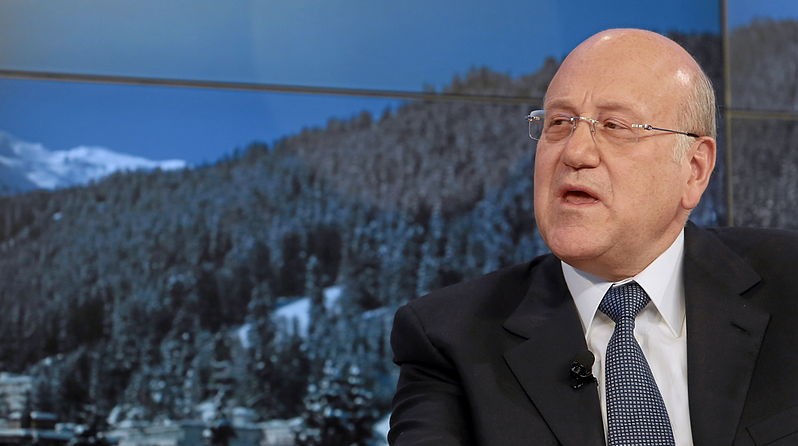
In this government, Hezbollah headed the Ministry of Industry and the Ministry of State for Parliamentary Affairs. In May of that year, the president’s term came to an end. Parliamentarians could not elect a new president, however, entering the nation into another political deadlock.
2016: The political deadlock concerning the presidency came to an end in 2016 as parliament elected Michel Aoun, a Christian ally of Hezbollah, as the president and Saad al-Hariri became the Prime Minister. PM al-Hariri formed a new government in December of 2016, a 30-minister government in which Hezbollah headed two ministries, the Ministry of Youth and Sports and the Ministry of Industry.
2018: The 2018 election was a large success for Hezbollah. Hezbollah itself won 13 seats, whereas their March 8th bloc won 71 seats, forming a majority in parliament. Hezbollah fielded one Sunni candidate in this election. In another victory for Hezbollah, they won 16.44 percent of the vote, the highest percentage for any individual party. The 2018 election saw an approximate 49.68 percent voter turnout.
2019: Following several months of negotiations, PM al-Hariri formed a new government in January 2019. This new government was comprised of 30 ministries, of which 19 were headed by Hezbollah’s March 8th alliance. Hezbollah itself again headed the Ministry of Parliamentary Affairs and the Ministry of Youth and Sports. In October, protests began largely in relation to the nation’s economic situation, as well as frustrations with the perceived incompetence of political elites and the sectarian system. Specifically, protests were spurred on by a tax implemented on WhatsApp, a popular messenger app in Lebanon. PM al-Hariri resigned just two weeks into the protests, which were stricken with violence. Supporters of both Hezbollah and Amal were reported to have attacked protestors. A new prime minister, Hassan Diab, was elected two months later in December. Diab was an ally of Hezbollah, and his nomination added to protests, as he was seen as one of the many corrupt political elites in Lebanon.
2020: PM Diab formed a new government in January. The new government showcased the high level of control Hezbollah had managed to exert upon Lebanese politics. The entirety of the 20-ministry cabinet was backed by Hezbollah and its allies. The PM, president, and parliamentary speaker were also allies of Hezbollah. Hezbollah itself nominated two ministers, the Minister of Health and the Minister of Industry, although the Minister of Industry was not technically a member of Hezbollah. PM Diab’s government was also short-lived. On August 4, 2020, approximately 3,000 tons of improperly stored ammonium nitrate exploded in the Port of Beirut. The resulting explosion killed at least 218 people and wounded more than 6,000, in addition to causing extensive infrastructure damage.
Hezbollah, a partial owner of the port, received significant backlash over the issue alongside the government. Protests began soon after and expanded as people also expressed their frustrations regarding Lebanon’s economic hardships and the impact COVID-19 was having on the nation. PM Diab resigned only a few days after the explosion, leaving Lebanon without a functioning government. Hezbollah attempted to restrict investigations into the Beirut Port blast, likely out of fear of legal implication in the blast.
2021: Following the resignation of PM Diab, a new government was not formed within Lebanon for over a year. Finally, in September of 2021, PM Najib Mikati formed his now third government. In PM Mikati’s new government of 24 ministers, Hezbollah’s March 8th alliance headed 16 ministries. Hezbollah themselves headed the Ministry of Labor and the Ministry of Public Works.
2022: In 2022 Lebanon held its most recent parliamentary elections. While Hezbollah performed well, maintaining the 13 seats they had won in the previous election (in addition to gaining two aligned independent seats), their allies did not perform so well. Hezbollah’s alliance lost its majority in parliament, winning 62 seats in total (down from 71 in the 2018 election). Hezbollah again won the highest percentage of the vote out of any party at 18.56 percent of the vote.

The general election once again saw a small drop in voter turnout, with 49.19 percent of registered voters participating in the election. Later in the year, Lebanon entered yet another political crisis, one that remains to this day. President Aoun’s term ended in October, and the parliament has thus far been unable to elect a new President despite a dozen rounds of voting on the matter. With this, a caretaker government (with limited powers) has been formed in order to take care of the nation, with PM Mikati being the acting president.
Also in 2022 was the indictment of two Hezbollah members in the murder of former Prime Minister Hariri in 2005. Hassan Habib Merhi and Hussein Hassan Oneissi were sentenced to life in prison in absentia.
Hezbollah’s Social Services
There are many reasons why Hezbollah has been referred to as a “state within a state,” one being the wide array of social services the group operates in the country. These services serve a number of purposes for Hezbollah. Namely, it allows Hezbollah to build up support amongst Lebanese populations, particularly Shia Muslims who have historically been under-supported by the government, and to offer itself as an alternative to the government, thus undermining support for the government while increasing support for Hezbollah. In addition, these services provide areas within civilian life for Hezbollah to push its “resistance society” ideology.
The amount of social services Hezbollah offers is extensive, ranging from waste services to healthcare, education, and more.
Healthcare: Hezbollah’s primary healthcare provider is the Islamic Health Organization (IHO). Founded in 1984 during the First Lebanon War and the Lebanese Civil War, the IHO’s history is nearly as long as Hezbollah’s itself. The organization’s main goals are twofold: providing healthcare to Hezbollah operatives and their families, and serving the wider Shiite population. Since its founding, the IHO has catered to refugees displaced by Lebanese conflicts, those injured in military operations, and general healthcare needs. As of 2019, the IHO boasted a diverse network of 87 facilities, including hospitals, medical centers, and clinics, spread across various Lebanese regions. These locations are concentrated in Shiite-majority areas or regions with significant Shiite minorities.
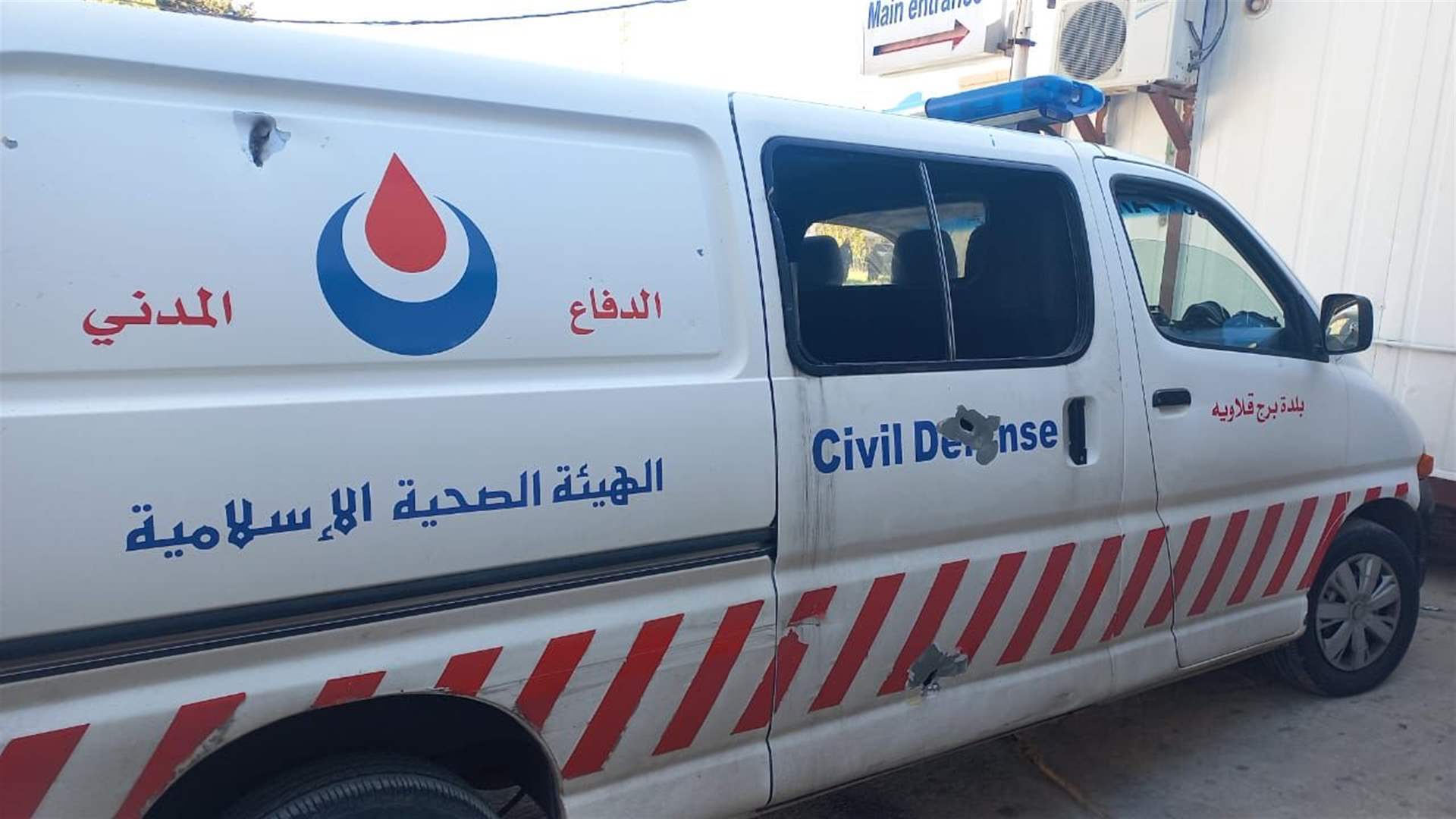
The IHO offers a comprehensive range of services, including mental health care, general healthcare, emergency and paramedic services, medical care in Hezbollah-run schools, and smaller programs like school vaccinations. The IHO’s hospitals have become the primary healthcare providers for a large portion of Lebanon’s Shiite population, estimated at around two million people. This service has seen exponential growth: the IHO served roughly one million people in 2014, demonstrating a significant increase. The IHO’s popularity among the Shiite population likely stems from the fact that many of its services are subsidized or even free, a welcome benefit considering Lebanon’s high healthcare costs. The IHO’s operational costs are not publicly available, but monthly estimates reach into the tens of millions. Iran is believed to be the primary source of this funding. While Shiite Muslims are the primary beneficiaries of the IHO’s services, mirroring the trend with Hezbollah’s other social services, individuals from other religious backgrounds occasionally utilize these services as well.
While the IHO generally cooperates with the Lebanese government, they are entirely separate entities. The Lebanese government maintains its own healthcare network.
Education: Hezbollah’s Al-Mahdi school network plays a crucial role in promoting their ideology of resistance. This private school network operates across Lebanon, with an additional branch in Iran for Lebanese students studying abroad. The schools boast modern facilities and technology, making them competitive with other private schools and attractive to parents. This is important because Lebanon’s education system is primarily private, with roughly 70 percent of students attending non-state schools, creating competition between Lebanon’s array of private schools. Lebanese private schools have no standards or curriculums that they legally have to adhere to, and no state bodies exist to ensure quality. Despite facing limited external scrutiny, students from Mahdi schools consistently perform well on exams, and are considered to be top-performers. However, these schools are also used by Hezbollah to instill their ideology and present a specific historical narrative. The exact details of the curriculum remain unclear due to restricted access for outside observers.
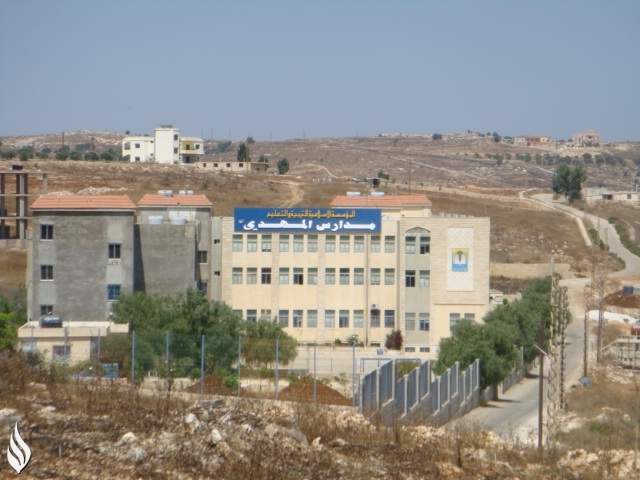
Regardless, Mahdi schools compete effectively with others nationally. Notably, some graduates go on to participate in Hezbollah’s social programs, further strengthening their “resistance society” ideology. Additionally, classrooms are typically decorated with portraits of Ayatollah Khomeini and Hassan Nasrallah, prominent figures in Hezbollah’s ideology. While tuition is approximately $1,000 per year, Hezbollah offers scholarships and financial aid to supporters and low-income families. This keeps the schools accessible and expands their reach. Funding largely comes from Hezbollah and Iran.
Founded in 1993, the Al-Mahdi network has grown significantly. As of 2019, it operated at least 14 kindergartens, 5 elementary schools, 15 junior high schools, and 6 high schools, educating thousands of students annually.
Hezbollah’s Martyr’s Foundation: Another pivotal piece of Hezbollah’s social services is its Martyr’s Foundation. The foundation provides financial and social support to the families of Hezbollah “shahids” (martyrs) killed in the service of Hezbollah and contributes to reinforcing their glorification within society, another part of Hezbollah’s push for a resistance society. The foundation places a particular focus on the children of martyrs, financing their education from elementary school all the way through college. Additionally, it often covers healthcare costs for the entire family and provides a monthly stipend for financial support. Psychological support is also offered to families who have recently lost loved ones to help them through the grieving process.
The Martyr’s Foundation is one of Hezbollah’s most expensive projects, costing an estimated 100 million per year. Much of its funding comes from an extensive fundraising campaign, Iran, as well as companies which the foundation owns that generate revenue in order to fund the foundation.
Other Programs: While the Islamic Health Organization, the Mahdi School Network, and the Martyr’s Foundation are Hezbollah’s key programs, Hezbollah additionally operates:
- The Imam al-Mahdi Scouts, a youth program that doubles as Hezbollah’s youth movement.
- The al-Emdad Association, a charity that provides financial aid, food assistance, and household necessities for the needy in Lebanon.
- The Women’s Authority, a women’s program that allows women to participate or work in Hezbollah’s many programs, as they are not technically allowed to become members of Hezbollah. The authority also deals with general women’s activities.
- Sport’s Mobilization, which runs and sponsors sports programs within Lebanon.
- Jihad al-Bina, which heads construction and reconstruction efforts, particularly in low-income areas or areas that have been damaged during wars.
- Hezbollah also operates waste services, which is highly needed due to an ongoing waste crisis in Lebanon resulting from the ill-equipped and ill-funded government waste management system.
The primary beneficiaries of Hezbollah’s programs are Shia Muslims. Hezbollah, a Shiite organization, recognized that Shia Muslims have historically gone under-supported by the government. The benefits offered by Hezbollah’s social services allow Hezbollah to present themselves as an alternative to the government to build political and societal support for the organization and the resistance.
Hezbollah’s Military Capabilities
Hezbollah is the world’s most heavily armed non-state actor, according to multiple sources. Their impressive military arsenal ranks them above even some nations in the Middle East, including, according to some, the Lebanese military itself.
Manpower: There is no agreed-upon number for its personnel, with estimates varying widely between the number of fighters Hezbollah claims to have, and foreign estimates. In 2021, Nasrallah claimed that Hezbollah had 100,000 “trained” fighters, which if true, would make Hezbollah larger than the Lebanese military, which has approximately 85,000 active personnel. However, Western and Israeli estimates are much lower, varying from 20,000 to 30,000 fighters and approximately 20,000 reservists. This number does not include all of Hezbollah’s members or workers in its social programs, political activities, women’s groups, or volunteer activities.
Since the beginning of the Israel-Gaza War, Nasrallah has claimed that Hezbollah has now surpassed 100,000 in its number of trained fighters.
Hezbollah has been found to have operatives on six continents, showing they have the ability to carry out overt covert militant, and criminal activities across the globe. Hezbollah’s robust counterintelligence capabilities and enforced compartmentation make it difficult to gather specifics on its role and activities, according to an Australian government report.
Weaponry: In 2006, the New York Times reported that Hezbollah was a “militia trained like an army and equipped like a state,” which is especially true with regard to its rocket and missile arsenal. Hezbollah’s arsenal is comprised mostly of small, man-portable, and unguided surface-to-surface artillery rockets. Although these devices lack precision, their sheer number makes them effective weapons. According to Israeli sources, Hezbollah held around 15,000 rockets and missiles on the eve of the 2006 Lebanon War, firing nearly 4,000 at Israel over the 34-day conflict. Hezbollah has since expanded its rocket arsenal, and estimates range from 120,000 to 200,000 rockets; an approximate tenfold increase since 2006.
- Short-range, unguided rockets: 40,000-80,000 rockets. They are primarily launched through the Katyusha rocket system, however Hezbollah also has Fajr-1, Burkan, Falaq-1, Falaq-2, Shahin-1, and Type-81 systems. Effective range is from a minimum of 4km up to 40km.
- Long-range, unguided rockets: 60,000-80,000 rockets. Hezbollah’s long-range rocket systems are the Fajr-3, the Fajr-5, Raad-2 and Raad-3, and Khaibar-1 systems. Effective range is from a minimum of 43km up to 100km.
- Short-range, unguided ballistic missiles: 20,000-40,000 missiles. Hezbollah has three short-range missile systems; the Zelzal-1, Zelzal-2, and Fateh-110/M-600 systems. Effective range is from a minimum of 125km up to 300km.
- Intermediate range, unguided ballistic missiles: 10-50 missiles on the Scud-B/C/D missile system. Effective range is from 300-500km.
- Short-range, guided ballistic missiles: 150-400 missiles on the Fateh-110/M-600 missile system. Effective range is from 250-300km.
*Note that all estimates of Hezbollah’s rocket/missile stockpiles are pre-war estimates.
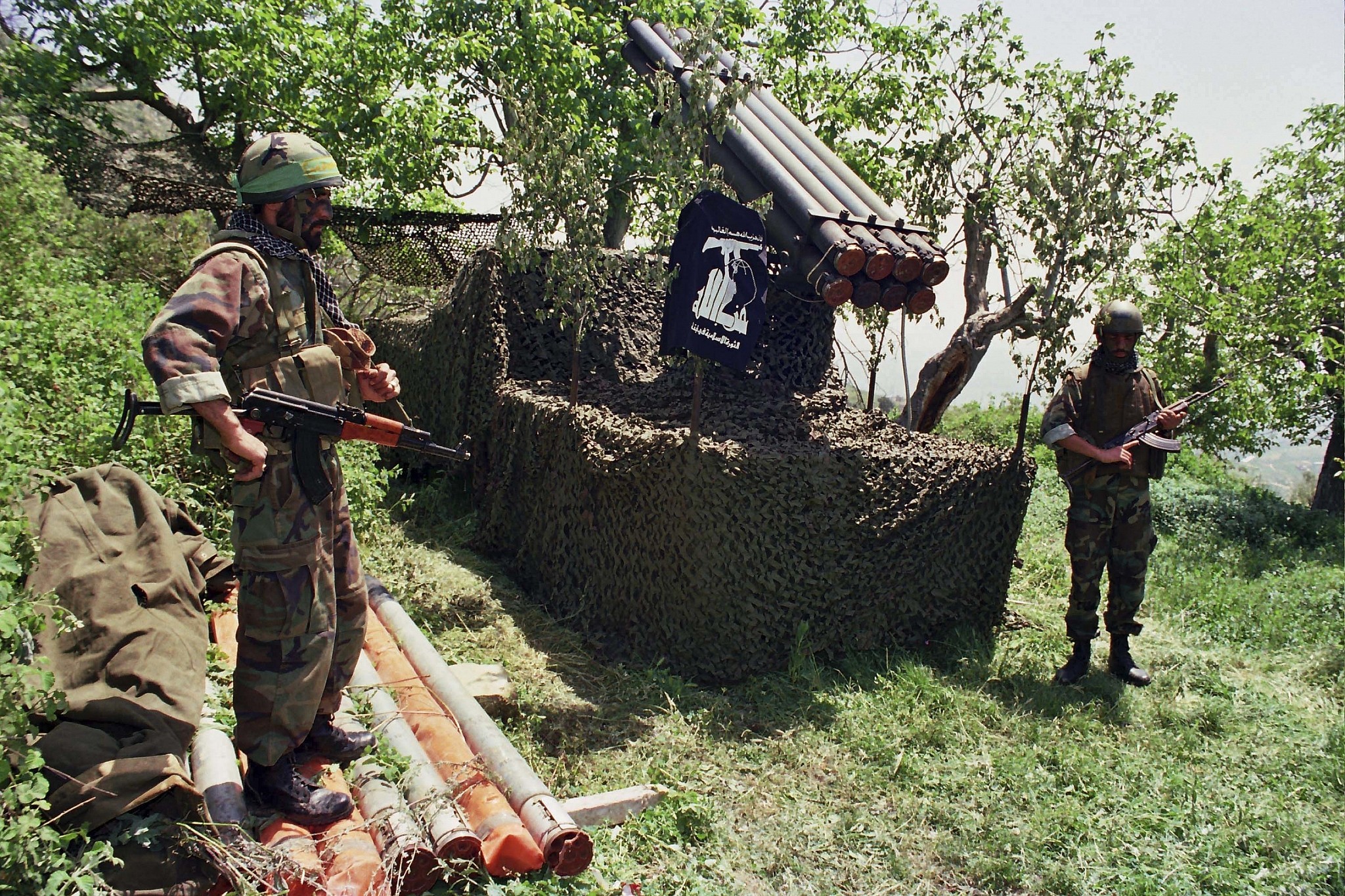
Nasrallah has claimed that Hezbollah has greatly expanded its weapons capacity, specifically its guided missiles. Further, Nasrallah, on June 19th, claimed that Hezbollah had “obtained new weapons that will be revealed in the field.” The capacity to which Hezbollah has expanded its rocket and missile stockpiles, as well as what Hezbollah’s “new weapons” might be, is currently unknown.
Hezbollah also has a wide array of Western and Soviet small arms and typically allows its soldiers the option to choose which weapon they wish to use. Most opt for Soviet small arms, such as the AK-47. Pivotal to Hezbollah’s direct engagement tactics against Israel are their anti-tank weapons. It has both Western and Soviet systems, as well as several Iranian systems and several different kinds of RPGs, ATGMs, and recoilless rifles. ATGMs, in particular, were one of the primary sources of casualties incurred against Israeli forces in the 2006 war.
Also important to Hezbollah’s military strategy against Israel is its need for air defenses, although even Hezbollah has admitted they are lacking in this capacity. Although Hezbollah has several different anti-aircraft guns, all of Soviet origin, they are all outdated and unable to effectively combat modern Israeli air equipment. As such, the anti-air guns are often used as ground-attack artillery instead of to engage aircraft. Hezbollah also has MANPAD systems, however, its use of them is also oftentimes ineffective. From 1982-2000, Hezbollah only shot down one Israeli helicopter. Similarly, in the 2006 war, Hezbollah shot down one CH-53 transport helicopter. Israeli forces were able to evade Hezbollah’s air defenses with ease.
Not only does this lack of air defenses alter Hezbollah’s combat strategy, but it also alters Hezbollah’s military infrastructure placement and styling.
Hezbollah also has several UAV and loitering munitions systems, the majority of which are Iranian in origin. Hezbollah has claimed to, with Iranian assistance, have created domestic manufacturing centers for drones. On June 19th, Nasrallah claimed that “we have a large and abundant number of drones because we manufacture them.”
Additionally, Hezbollah has several mortar and artillery systems, which are Western, Soviet, Chinese, and Iranian in origin.
Although Hezbollah has armored personnel carriers (APCs) and tanks, the latter provided to them by Syria, it is unlikely that Hezbollah would field tanks in a military confrontation with Israel due to how quickly they would likely be disabled.
Infrastructure: Also due to Israel’s air superiority, Hezbollah has no critical military infrastructure, and its infrastructure is highly decentralized. Hezbollah has a number of highly defensible bunkers in both rural and urban locations. The necessity for this strategy was evidenced in 2006 when Israel destroyed Hezbollah’s entire headquarters complex in Beirut. The headquarters oversaw much of Hezbollah’s logistics, intelligence, and administrative tasks during the war, and represented a large singular loss for Hezbollah.
Keen to prevent this from happening again, Hezbollah’s command centers and infrastructure have become significantly more decentralized, with most areas having no more infrastructure than the next, although Shiite villages are typically the only villages with defensive infrastructure in the village itself. Hezbollah’s defensive plans often rely upon stockpiles built up within their defensive infrastructure. This decreases the need for consistent supply lines. Many of Hezbollah’s bunkers, many of which are underground in order to decrease the effectiveness of Israeli airstrikes, are fitted with running water and weeks of supplies.
Many of these defensive locations, as well as rocket launch sites, are well-concealed. As such, Israel has had some difficulty in locating a number of these locations. The inability of airstrikes to disable many of these locations would prompt direct ground intervention by Israeli forces, a difficult task given how defendable many of these locations are.
Hezbollah’s launch sites vary in style, although many are hidden. Hezbollah’s rocket systems are made highly mobile within war time. In present clashes, Israel oftentimes strikes back at Hezbollah’s launch sites, in which they are typically destroyed (or at least heavily damaged), but Hezbollah has hundreds of hidden launch sites, far beyond the capabilities they are using in present clashes. On top of Hezbollah’s hidden launch sites, they also have rocket systems capable of being fired from trucks, increasing their mobility.
Notable Attacks Carried Out by Hezbollah
- US Embassy in Beirut: In April 1983, a Hezbollah suicide bomber detonated a car bomb at the US Embassy in Beirut, killing 64 people, 17 of which were Americans, including Robert Ames, the CIA Director of the Office of Near East and South Asia Analysis, notable for establishing back-channel connections with Yasser Arafat’s Palestine Liberation Organization when it was still a banned terror organization by the US government.
- Beirut Barracks Bombing: In October 1983, the US and French military barracks in Beirut were bombed, killing 241 US servicemen and 58 French servicemen. Hezbollahs complete role is debated, as the attack was claimed by the Islamic Jihad Organization, although some believe the group was tied to, a front for, or a precursor to modern Hezbollah.
- The Kidnapping of CIA Station Chief William Buckley: In March 1984, Hezbollah operatives kidnapped the then-CIA Station Chief in Beirut. Buckley was interrogated, tortured, and eventually died in captivity in 1985 after 14 months in captivity, though the exact time of his death is disputed.
- US Embassy Annex: In September 1984, Hezbollah bombed the US Embassy Annex in Beirut after it had moved locations following the 1983 bombing. This second bombing killed 24 people, including a suicide bomber.
- TWA Flight 847: The Trans World Airlines flight from Cairo to San Diego was hijacked on June 14, 1985, and forced to land in Beirut. The 153 passengers and crew were held hostage for 17 days. The pilot was forced to crisscross the Mediterranean from Beirut to Algiers and back three times, with the hijackers demanding the release of hundreds of Lebanese-Shia detainees in Israeli custody. One US Navy diver was killed in the incident. Western intelligence services attributed the attack to Hezbollah, although the group has denied involvement.
- Israeli Embassy in Buenos Aires: In March 1992, Hezbollah was blamed for an attack on the Israeli embassy in Buenos Aires, Argentina. A car bomb killed at least 20 people, and injured at least 250. This was Argentina’s deadliest terror attack until a following Hezbollah attack in 1994.
- Israeli Embassy in London: In July 1994, a Hezbollah militant detonated a carb bomb at the Israeli Embassy in London and the Balfour house, injuring 20 people.
- AMIA Bombing, Buenos Aires: In July 1994, a car bomb was detonated against the Argentine Israelite Mutual Association (AMIA; Asociacion Mutual Israelita Argentina) community center in Buenos Aires, killing 86 and injuring 300 in what remains Argentina’s deadliest terror attack to date. The attack was claimed by Ansar Allah, a Palestinian group that is allied to Hezbollah. However, both Hezbollah and Iran were blamed by many for the attack; Iran for planning it and Hezbollah for carrying it out. The attack led to controversy within Argentina, as many accused the Argentine government of covering up Iran’s involvement. More recently, in 2024, an Argentinian court ruled that Iran had directed the attack and that Hezbollah carried it out.
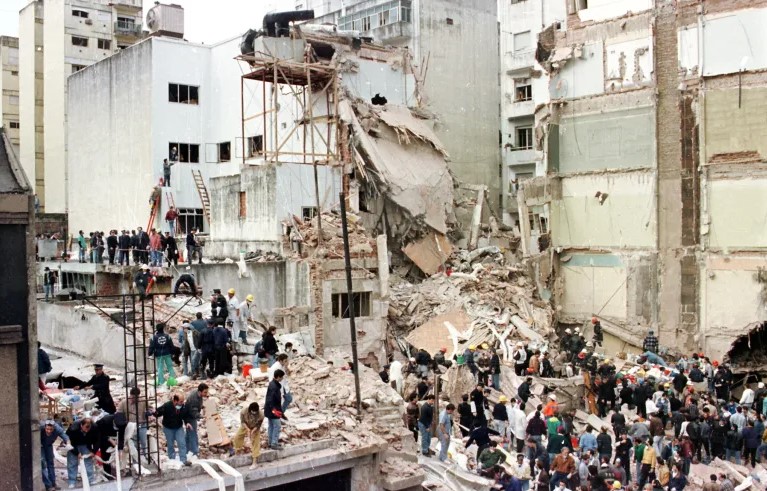
- Khobar Towers: In June 1996, Hezbollah was blamed for setting off a nearly 5,000-pound truck bomb at Khobar Towers Air Force housing complex in Dhahran, Saudi Arabia, killing 19 members of the 4404th Wing of the United States Air Force and wounding nearly 500 more. The blast from a truck bomb was so massive it was felt in Bahrain 20 miles away. The terrorist attack on the Khobar Towers was the bloodiest attack on America between the Beirut Marine barracks disaster in 1983 and September 11, 2001.
- Assassination of Lebanon’s Prime Minister: In February 2005, Lebanese Prime Minister Rafiq Hariri was assassinated. His assassination prompted the Cedar Revolution in Lebanon, which caused the government to collapse and Syria to withdraw from the country after a decades-long occupation. In 2022, two Hezbollah members were indicted for PM Hariri’s murder, after continuous efforts by Hezbollah to delay or halt investigations into the matter.
- Kidnapping Starts the 34-Day War: In July 2006, Hezbollah launched a diversionary rocket barrage into northern Israel, crossing the border and kidnapping a pair of Israeli soldiers and killing at least 8 others, intending to use the Israeli hostages to open negotiations for a prisoner exchange. However, Israel launched a massive air operation that began the 34-Day War.
- Israeli Tourists Killed in Bulgaria: In July 2012, a suicide bombing in Burgas, Bulgaria, killed five Israeli tourists and the driver of their tour bus. Both Israel and the EU blamed Hezbollah for the attack.
Designation as a Terror Group
Having carried out operations across the globe, and against many different nations, there are a number of different countries and groups that recognize Hezbollah to be a terrorist group, in part or in whole.
- Designate the entire organization as a terror group: Argentina, Australia, Austria, Bahrain, Canada, Colombia, the Czech Republic, Estonia, Germany, the Gulf Cooperation Council, Guatemala, Honduras, Israel, Lithuania, the Netherlands, Paraguay, Serbia, Slovenia, the United Arab Emirates, the United Kingdom, and the United States.
- The European Union, Kosovo, and France have only designated Hezbollah’s ‘military wing’ as a terror group. France, specifically, considers Hezbollah’s political party a legitimate organization within Lebanese society and politics.
- The Arab League had previously designated Hezbollah in its entirety as a terror group in 2016, however retracted this designation on June 29th, 2024.
This article is the second of a three-part series on Hezbollah. For more information, see Part I: Hezbollah Origins and Ideology and Part III: Modern Hezbollah. The series is part of the wider “Understanding” series, aimed at providing the history behind, and context to, the world’s ongoing conflicts and issues in order to increase your understanding of modern world issues.

